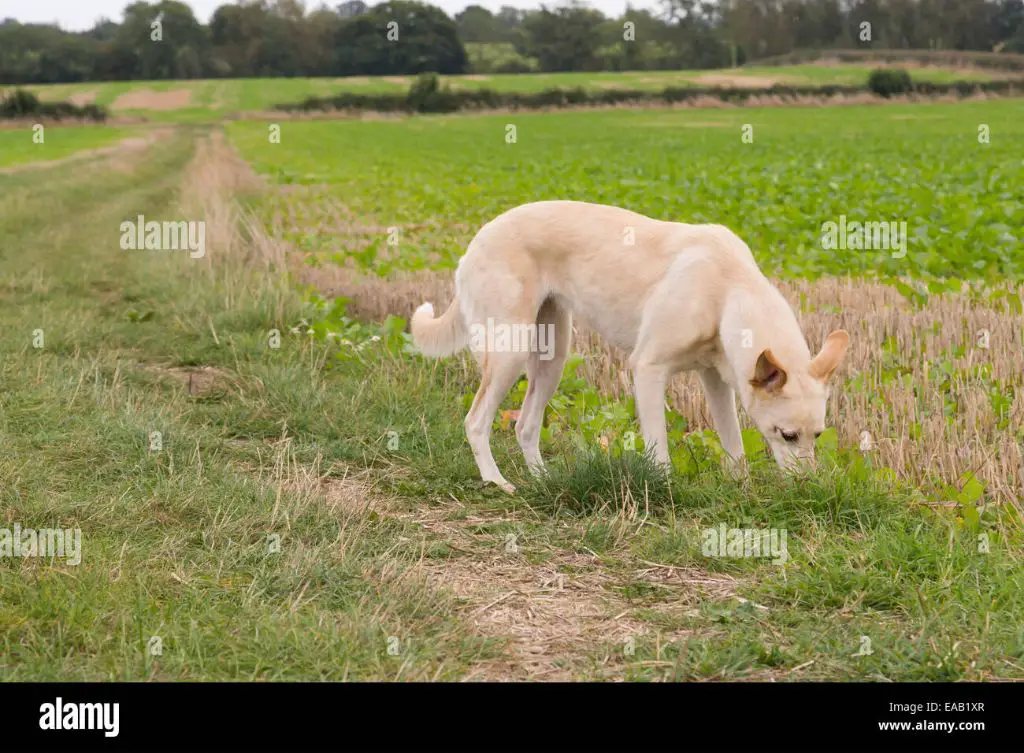Introduction
Understanding a dog’s weak points and areas of vulnerability is important for all dog owners. While dogs have many strengths—like their keen sense of smell, unwavering loyalty, and enthusiastic affection—they also face some biological and health challenges. Knowing what your dog’s weaknesses are can help you provide better daily care, make smart choices about diet and exercise, and catch health problems before they become serious. Paying attention to your dog’s weaknesses allows you to support them through any difficulties and set them up for maximum health and happiness. This knowledge ultimately strengthens the bond between owner and pet.
In this article, we will explore some of the most common weaknesses seen in dogs. We will look at potential issues dogs face with their senses, teeth, digestion, skin, joints, and disease prevention. By understanding where dogs may struggle, owners can address these areas through proper care, training, diet, exercise, veterinary care, and lifestyle adjustments. While dogs depend on us for their wellbeing, knowledge of their vulnerabilities allows us to depend on them for their unconditional friendship and love.
Sense of Smell
A dog’s sense of smell is incredibly important. Unlike humans who rely most heavily on vision, dogs experience the world primarily through their nose. A dog’s sense of smell is tens of thousands times more acute than a human’s. They have up to 300 million olfactory receptors in their noses, compared to only 6 million in people.

This powerful sense of smell allows dogs to detect and interpret very faint odors. They use scent to hunt, navigate, identify other animals, locate people and things, and even diagnose some illnesses. Smell also plays a major role in a dog’s memory and emotions.
When a dog’s sense of smell is impaired due to illness, injury, or aging, it can cause significant anxiety and stress. Not being able to rely on their nose to understand their environment is frightening and disorienting for dogs. Loss of smell diminishes their confidence and quality of life. It’s important for owners to be aware of a dog’s dependency on scent and monitor for any decrease in olfactory ability.
Hearing
Dogs have extremely sensitive hearing compared to humans. Their wide movable ears allow them to pinpoint the source of sounds quickly. While this acute sense of hearing is advantageous in the wild, it can cause problems for domestic dogs.
Loud noises like fireworks, thunderstorms, power tools, and traffic can be painful and frightening for dogs. The noise levels that most humans find tolerable can actually damage the sensitive structures in a dog’s inner ear. Short exposures can lead to temporary hearing loss, but repeated exposure to loud noises can cause permanent hearing damage over time.
Dog owners should be mindful of loud environments and try to mitigate excessive noise. Providing a safe, quiet space for your dog to retreat to during noisy events can help keep their hearing healthy and reduce anxiety.
Vision
Compared to humans, dogs have some limitations when it comes to their sense of sight. Specifically, they see less color and have more restricted peripheral vision.
Dogs are essentially red-green colorblind, meaning they can only see blends of blue, yellow, gray, and very bright green. They have trouble distinguishing red from green or different shades of green. So while dogs can see things like grass or trees, they don’t perceive all the subtle variations in color that humans can detect. Their worldview contains far fewer vibrant hues.
Dogs also can’t see as wide a visual field as people. Their peripheral vision is roughly 240 degrees, versus almost 300 degrees for humans. This means dogs have a substantial blind spot directly in front of and behind them. They rely more on their other senses like smell and hearing to be aware of what’s in those directions.
These visual limitations mean it’s easier for dogs to be startled by something suddenly appearing in their line of sight. It also makes activities like catching frisbees mid-air more challenging. Overall, dogs see the world quite differently than we do visually.
Dental Health
Dogs, like humans, are susceptible to dental diseases that can lead to tooth decay, infection, and tooth loss if left untreated. Some of the most common dental issues in dogs include:
Gum Disease
Periodontal disease is an inflammation and infection of the gums and tissue surrounding the teeth. It’s caused by a buildup of plaque and tartar on the teeth. Poor dental hygiene can cause gingivitis, which can progress to severe periodontitis if not treated. Periodontitis can lead to loose teeth, receding gums, and bone loss in the jaw.
Tooth Decay

Dogs can get cavities just like people. Sugary foods, bacteria in the mouth, genetics, and poor oral care contribute to tooth decay in dogs. Untreated caries can lead to infection or tooth loss. Cracked teeth are also common in dogs and require veterinary attention.
Digestion
Dogs have sensitive digestive systems that are prone to issues if not cared for properly. Their stomachs are not well equipped to handle sudden changes in diet, rich or fatty foods, or foods containing toxins. This can lead to vomiting, diarrhea, gas, and abdominal pain.
Some common digestive issues in dogs include:
- Food allergies or intolerances – dogs may be allergic to ingredients like grains, chicken, beef, or dairy.
- Gastroenteritis – inflammation of the GI tract caused by infection, parasites, toxins, or dietary indiscretion.
- Bloat – a life-threatening condition where the stomach fills with air and twists.
- Foreign body obstruction – caused by dogs swallowing non-food items that get stuck in the GI tract.
- Inflammatory bowel disease – chronic inflammation of the intestinal tract.
To keep your dog’s digestive system healthy, feed them high-quality food designed for their life stage, provide constant access to fresh water, limit fatty/sugary treats, and schedule annual vet check-ups to monitor for any issues.
Skin and Coat Issues

Dogs can experience a variety of skin and coat issues that can cause discomfort, itching, infections and hair loss. Some common skin and coat problems in dogs include:
Hotspots
Hotspots, also called acute moist dermatitis, are red, wet, irritated lesions that are often caused by excessive licking, chewing or scratching. They can develop suddenly and spread quickly. Treatment involves clipping the area, cleaning the wound and using topical medication. Identifying and eliminating the source of the itching is also important.
Allergies
Dogs can develop allergies to foods, medications, grass, pollen and more. These may cause incessant scratching, licking and chewing. Antihistamines, omega-3 fatty acids, shampoos and immunotherapy can help manage allergies. Keeping the dog away from the allergen is ideal.
Shedding
Most dogs shed to some degree. Excessive shedding can be normal during certain seasons or life stages. However, it can also result from poor nutrition, stress, skin diseases or other medical conditions. Regular brushing, bathing with a moisturizing shampoo and supplements may help. Veterinary attention is recommended for extreme shedding.
Orthopedic Health
Orthopedic issues are common in dogs, especially larger breeds. Some of the main orthopedic concerns include hip dysplasia, arthritis, and ACL tears.

Hip dysplasia occurs when a dog’s hip joint doesn’t form properly, leading to arthritis and lameness. Certain breeds like German Shepherds and Labrador Retrievers are genetically prone to hip dysplasia. Keeping dogs at a healthy weight and avoiding too much exercise at a young age may help reduce chances of developing hip dysplasia.
Arthritis is inflammation of the joints, causing stiffness and pain. It often develops as dogs age, but can also result from injuries or joint diseases like hip dysplasia. Signs of arthritis include difficulty standing up, limping, or reluctance to run, jump, or climb stairs. Arthritis can’t be cured but various treatments like joint supplements, weight management, and pain medications can help reduce discomfort.
ACL (anterior cruciate ligament) tears are a common knee injury, especially in athletic dogs that play fetch or Frisbee. ACL tears cause instability and lameness in the hind legs. They are painful and often require surgery. Keeping dogs at a healthy weight can help prevent ACL tears.
Being aware of common orthopedic issues and providing proper nutrition, exercise, and veterinary care can help keep a dog’s joints healthy and reduce chances of injuries or mobility issues.
Preventive Care
Preventive care is crucially important for keeping dogs healthy and avoiding issues down the road. Vaccines, parasite prevention, and wellness exams with your veterinarian are key components of preventive care for dogs.
Vaccines help prevent dangerous and potentially fatal diseases like parvovirus, distemper, and rabies. Core vaccines recommended for all dogs include DHPP, rabies, and in some areas, leptospirosis. Vaccination schedules will vary based on your dog’s risk factors, so check with your vet on the appropriate schedule for your dog. Keeping your dog up to date on vaccines protects them as well as other pets in the community.
Regular parasite prevention is another aspect of preventive care. Heartworm, intestinal parasites, fleas and ticks can all pose health risks and discomfort for dogs. Work with your vet to choose heartworm and intestinal parasite prevention as well as an effective flea/tick control product. Give these year round or seasonally based on your geographic area and your dog’s lifestyle.
Annual wellness exams allow your vet to get a baseline on your dog’s health and catch potential problems early. Wellness visits typically include a physical exam, heartworm test, fecal exam, and relevant bloodwork. Your vet may make vaccine, parasite prevention and other preventive care recommendations tailored to your dog’s needs.
Investing in preventive care helps set your dog up for a long, comfortable and disease-free life. Partnering with your vet on the right prevention plan is one of the most loving things you can do for your canine companion.
Conclusion
Caring for a dog’s weaknesses ultimately leads to better health and quality of life. While dogs have vulnerabilities in areas like hearing, vision, teeth, digestion, skin, joints and more, attentive pet parents can support their canine companions through preventive care, attention to diet, exercise and mental stimulation. Staying informed about breed-specific concerns, maintaining vet visits, and watching for changes as a dog ages are all ways to uphold their wellbeing. Though challenging at times, focusing on a dog’s weak points allows their innate strengths like unconditional love, loyalty and eagerness to shine through. With thoughtful support of their weaknesses, our furry friends can continue to enrich our lives every day.